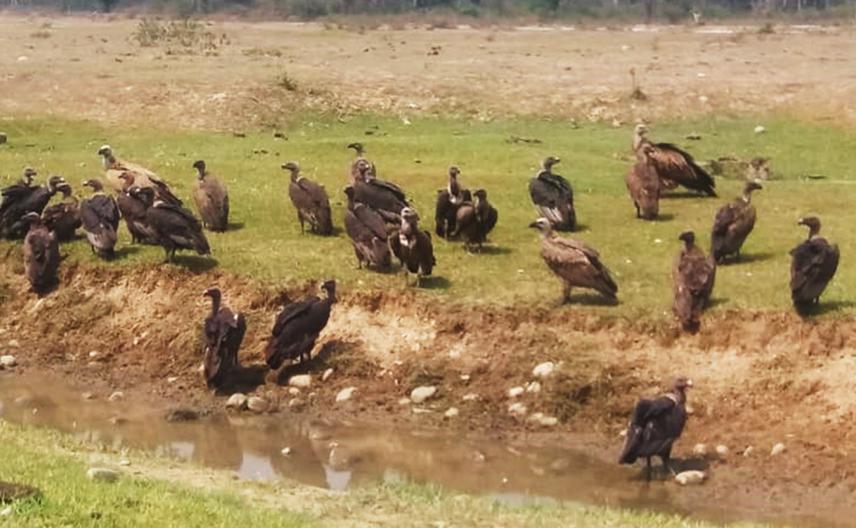Khima Nand Balodi
The project aims to mitigate the risk of electrocution mortality and diclofenac poisoning to critically endangered vultures in Terai districts of Uttarakhand. In order to achieve the same our major objective is identifying safe sites for livestock carcass dumping and shifting of unsafe sites which are in the close vicinity of power lines to the identified safer locations. Second objective is to understand the market availability of diclofenac and other harmful Non-Steroidal Anti-Inflammatory Drugs (NSAIDs), and advocacy for their removal from the veterinary treatment. Beside these, awareness and outreach activities are planned to involve and raise awareness among stakeholder on vulture conservation issues in the state. A trans-boundary stakeholder meeting with Nepal team is planned with aim to share trans-boundary conservation issues and enhance international collaboration for vulture conservation. The outcome of this project will contribute in vulture conservation actions and implementation of Vulture Safe Zone (VSZ) in Uttarakhand lowland.

The population of critically endangered Gyps vultures in the Indian Sub-continent has severely declined due to poisoning of diclofenac and other known threats during the recent decades. The Terai region of Uttarakhand supports seven vultures species including the three critically endangered vultures (Gyps bengalensis, Gyps tenuirostris and Sarcogyps calvus). In the previous studies we have found that the use of harmful NSAIDs including human use diclofenac is continued in veterinary treatment and risk of their poisoning to vultures is still prevalent. However, the risk of electrocution mortality to vultures in various dead livestock carcass dumping sites (feeding sites of vultures) was found a major threat in Uttarakhand lowland. In this project we have planned to shift such unsafe sites in Dehradun and Haridwar districts to an identified safer location. The identification of new livestock carcases dumping sites (safe for feeding of vultures) and shifting of unsafe sites would be undertaken with the involvement of skinners and respective forest division.
To understand the market availability and use of veterinary diclofenac as well as large vials of human use diclofenac and other NSAIDs, survey in about two hundred pharmacies would be conducted in all six Terai districts. The results will be shared through a stakeholder meeting with the office of the Chief Wildlife Warden, State Biodiversity Board, State Drug Controller and other responsible agencies, in order to initiate necessary actions for the complete removal of diclofenac in the region and state.
A trans-boundary stakeholder meeting with Nepal is planned to share experiences and trans-boundary conservation issues, as Nepal and India share geographical extent of their VSZs with each other. The meeting has been important after the evidences from the recent vulture release programme of Nepal, in which telemetry tagged vultures are seen roaming over different places in India including Terai region of Uttarakhand. This activity will enhance international collaboration between both the countries for vulture conservation. The project also aim to raise vulture conservation awareness among different stakeholders with special focus on students and teachers in schools, skinners, pharmacists, farmers and frontline staff of forest department. This would ensure their support and involvement in long term vulture conservation efforts.
The outcome of our project activities would be helpful in ensuring safe food and safe feeding site for wild and captive bred Gyps vultures (to be released in near future from India and Nepal), and ensuring Uttarakhand lowland as Vulture Safe Zone.